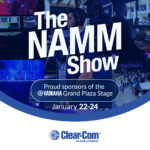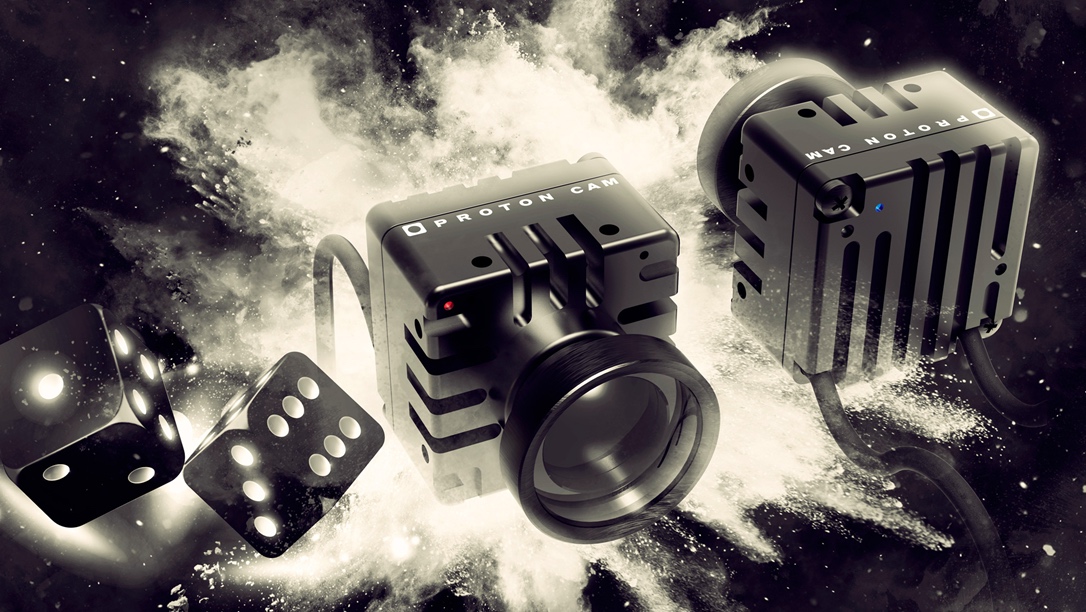Following their extraordinary reception at NAB2024, Proton Camera Innovations – a German innovator in the field of miniaturised cameras – will be using their attendance at IBC2024 (Booth 11.A06) to showcase their PROTON CAM, the world’s smallest broadcast camera.
In its European debut, the Proton team will not only demonstrate the remarkable technical specifications of the camera, but also highlight the wide range of applications in which it has already been implemented by a range of enthusiastic customers, of which high profile sports applications have been one of the most popular. These have included a number of global mountain biking events and a range of competitions in which the production team has sought to leverage live drone footage to capture in-the-moment action. Indeed, since its launch, demand for the camera has been so pronounced that Proton have decided to add two further additions to the range, which will be announced nearer to IBC.
Measuring just 28mm x 28mm and weighing only 24 grams, the PROTON CAM is not only tiny in size, but offers technical specifications which outstrip those of its competitors. In addition to the extremely low 2.5W power consumption, it uses 12-bit sensor technology and advanced chip technology for superior image quality and dynamic range, with a 97° wide-angle view, optional lenses from 70° up to 124° and excellent low-light performance without distortion. PROTON CAM also includes a tally light and stereo audio, a feature rarely offered on miniaturised cameras, making it ideal for both spontaneous action capture and directed productions. Additionally, its efficient power consumption provides longer battery life and reduces heat generation, ensuring reliable operation in challenging environments. Because Proton Camera Innovations maintain 100% ownership over their research and design process, they can thus guarantee full control over the innovation and quality standards of their products, which is what has led to the remarkable specifications associated with the miniature camera.
It is this combination of factors which has made the PROTON CAM so popular, even though it has only been available for a few months. A wide range of users have found the almost limitless creative potential of the camera appealing, and have deployed it in flexible and varied ways, from close-up, person-mounted shots at ground level to soaring wide-angle views from above. The wide and narrow lens options have also proved to be particularly beneficial in the field of motor sports. These applications – as well as integration into sports equipment, nets, pitch-markers or goals – will all be on show at IBC, with the company focusing on demonstrating how these unusual and often unprecedented angles and perspectives enhance the overall viewing experience for audiences worldwide, immersing viewers in the moment.
But this immersive quality is not limited to sport alone. Live concerts, events, reality shows, TV and film will all benefit from the compact and discrete nature of the Proton, allowing cinematographers and DoPs to not only capture dynamic, high-quality footage in any environment, but granting a valuable tool for those seeking innovative ways to tell their stories and capture compelling visuals.
Speaking of their attendance at IBC, Marko Hoepken, CEO for Proton, said: “The last year has been a whirlwind, and there is no sign of the pace slowing down. Indeed, with the popularity of the PROTON CAM since its launch, we’re working hard to bring our next two cameras to market, and we’ll be excited to showcase them at IBC. One area where we have experienced high demand is in the cinematography market, where the tiny size and negligible weight of the PROTON CAM allow for seamless integration with drones. This means that operators can choose a drone based on maneuverability and performance whilst still achieving broadcast quality images, rather than being forced to compromise with an integrated camera drone, which is optimised neither for flight nor for image capture. The PROTON CAM substantially changes the game in this field”.
He continued: “But to be honest what has surprised us the most is simply the sheer creativity of our customers; there have been some incredible integrations and applications, in all manner of objects, in helmets, on people… It’s strong evidence that our proprietary chip technology, flexible power supply and varied lens options lead to a camera with practically unlimited creative potential”.






